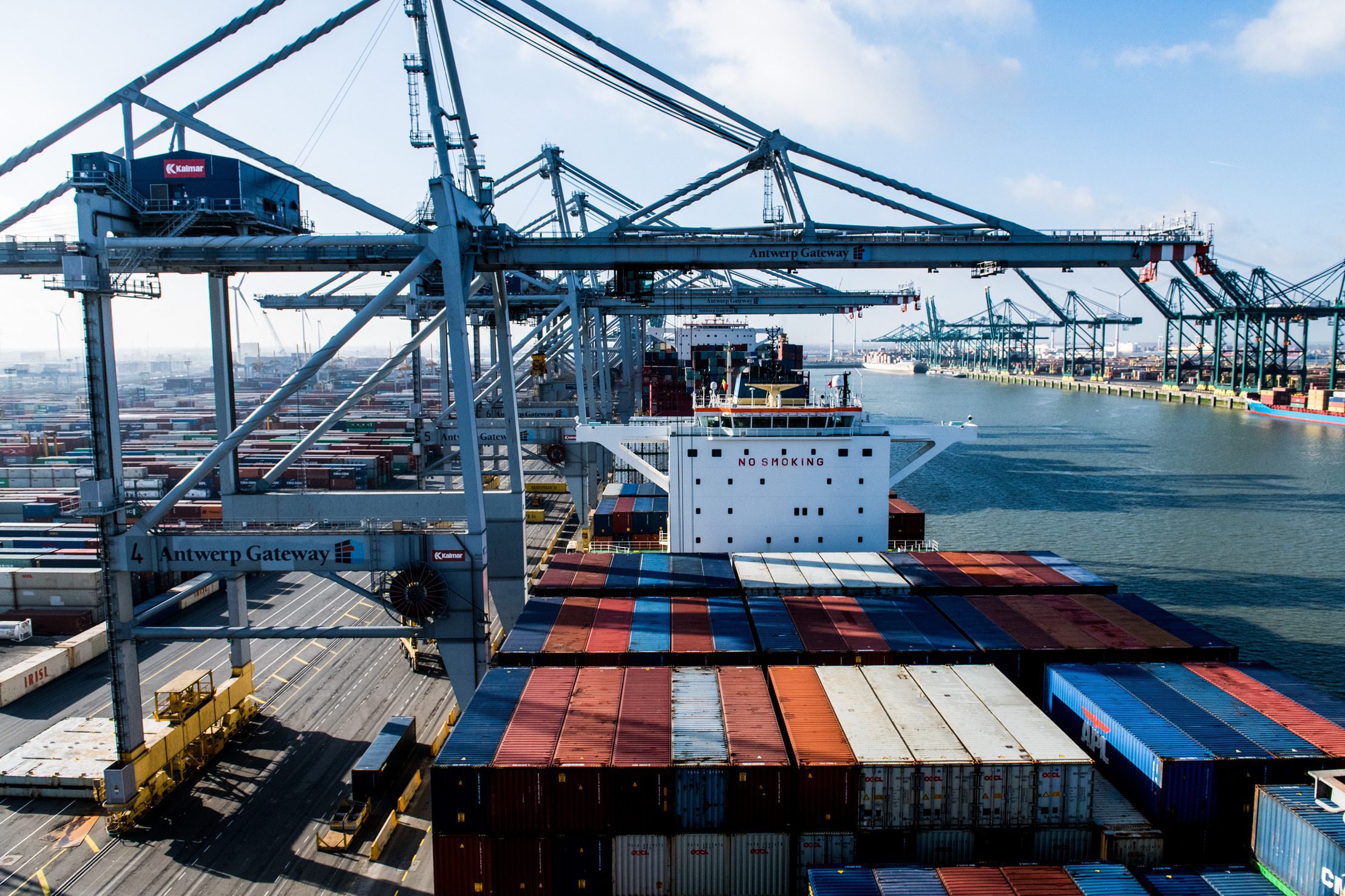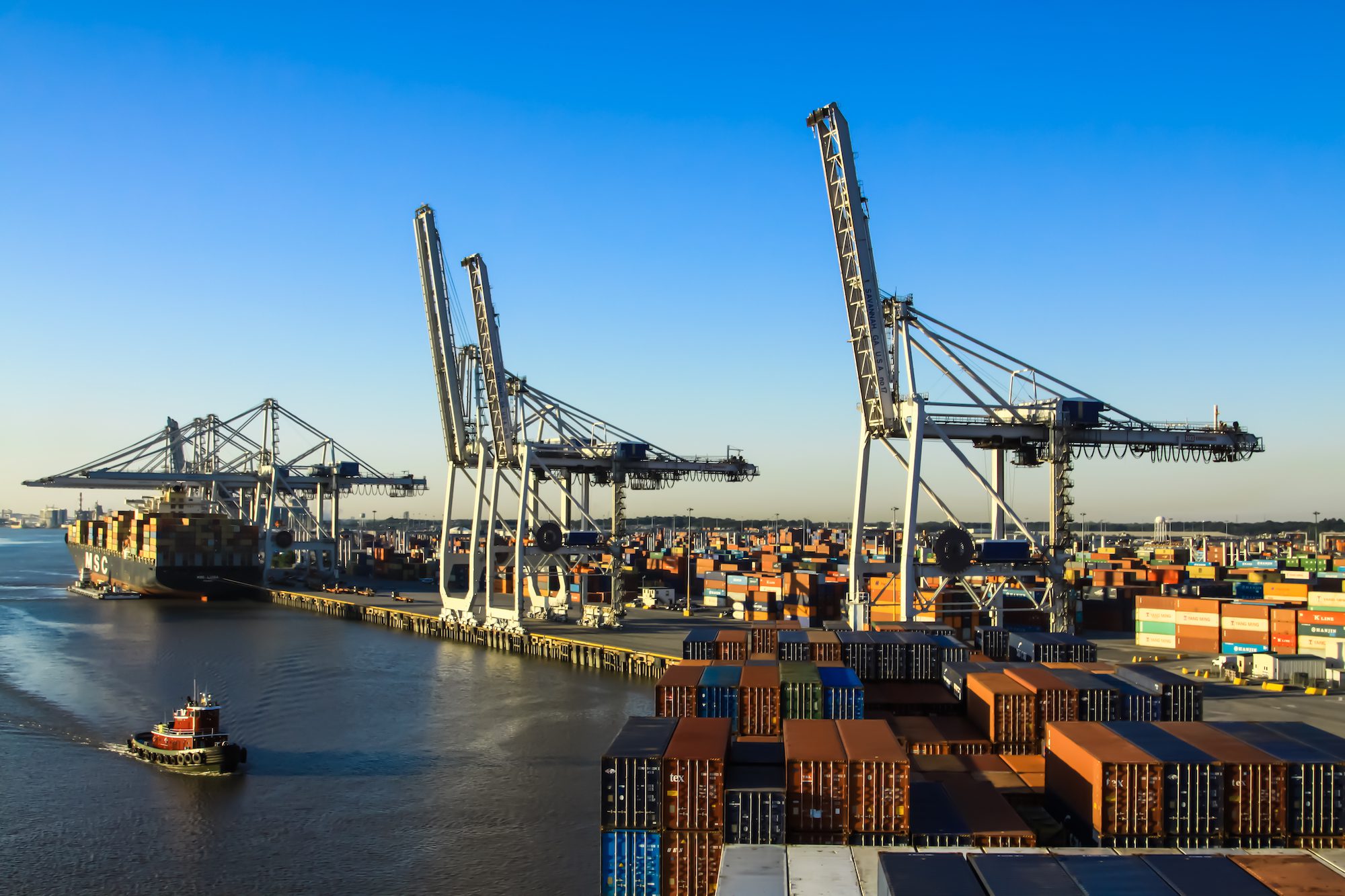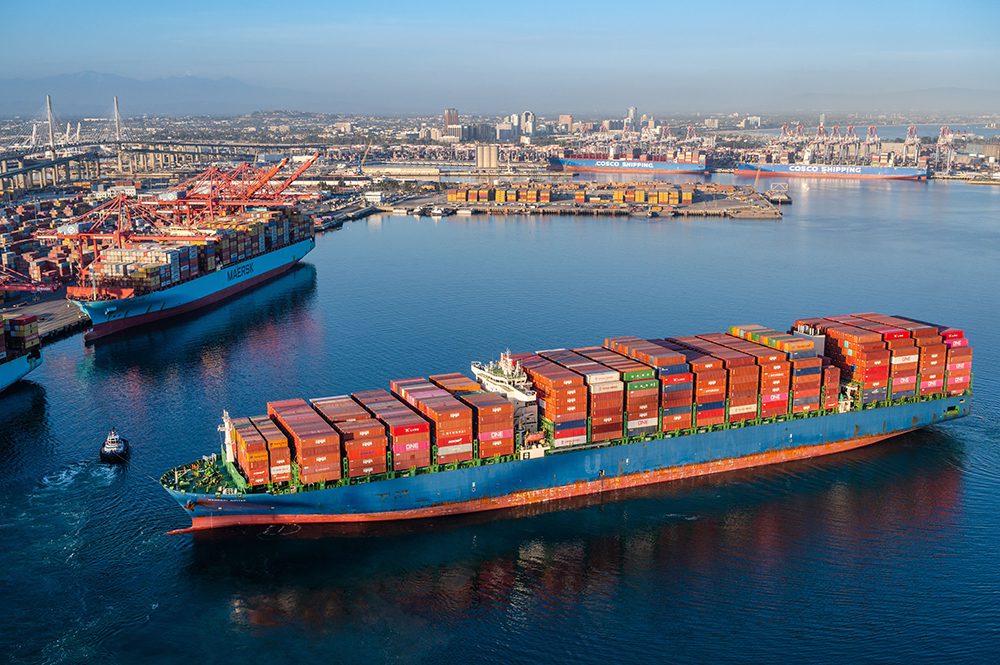By Ira Breskin,
Port administrators’ immediate challenge is to drive consensus among a variety of well-intentioned stakeholders to meet stringent, near-term pollution reduction goals, speakers said last week at a leading industry conference.
To help port administrators address this difficult challenge, speakers at the International Association of Ports and Harbors World Ports Conference 2021 offered a host of viable, cooperative plans designed to spur ports’ efforts to significantly reduce their carbon footprint. They also encouraged using digital technology to improve ports’ environmental performance.
More specifically, speakers offered plans designed to reduce the carbon contributions of port terminals, usually a port’s primary tenant, refinery/bunkering operations often housed within a port, and ships calling at the port that rely on services provided by these port-centered businesses.
Discussion took place during a virtual five-day conference hosted by the Port of Antwerp.
Speakers stressed the urgency required for the port sector to meet the maritime industry’s aspirational goal to reduce carbon emissions by 50 percent by 2030, from 2005 levels, and become carbon-free by 2050, in order to stay in lockstep with terms of the Paris climate agreement.
Separately, the International Maritime Organization, which regulates ships’ afloat operations, is working to set short-term emissions regulations for vessels that call at ports.
“The direction is clear. How to get there is not clear,” Daniel Yergen, IHS Markit vice chairman and a leading oil industry expert, told conference participants.
“In the middle sits ports and the shipping industry,” said Christine Figueres, an architect of the 2015 Paris Climate Agreement. She served as executive secretary of the United Nations Framework on Climate Change that drafted the Paris agreement.
Despite the maritime sector being a modest carbon emitter, the public holds the industry fully accountable for its contribution, speakers said. In fact, “the shipping industry (which accounts for 2 percent to 3 percent of global CO2 emissions) is lagging behind (in remediation efforts),” according to Figueres.
To make meaningful progress, the sector should leverage port-wide pollution remediation measures, IAPH speakers said.
“It’s all about collaboration,” said Julian Walker, CEO of the Associated British Ports. It owns or operates 21 ports in the United Kingdom.
However, successful collaboration is difficult given the myriad of roles that ports play when serving as crucial nodes— and sometimes energy hubs— in the worldwide supply chain, while engaging multiple stakeholders.
Consider the Port of Antwerp’s strategic position. It is Europe’s second-largest container port, by volume; houses the continent’s largest petrochemical production cluster, second worldwide only to Houston; and is the world’s fifth-largest bunkering port.
Ports’ most direct challenge, over which they have the greatest control, is to reduce the carbon contribution of their cargo handling equipment and the drayage trucks that call at port terminals. Older cargo handling equipment and trucks consume lots of carbon-rich fuel, belching CO2 and particulate matter.
To address that problem, many ports, including the Port of Montreal, are replacing diesel-powered cargo handling equipment with electric and battery-powered units.
Still others, such as the Port of New York and New Jersey, offer financial incentives and/or low-cost financing to independent drayage drivers, who call at the port, to replace their old trucks with greener, more fuel-efficient ones.
To help reduce ship emissions generated while a vessel is at a port berth, Plug Share Power recently began operating a shore-side, bunkering operation (using renewable, carbon-free, hydropower) at the Port of Bergen, Norway’s second-largest port.
Vessels release about 7 percent of their total emissions when calling at marine terminals, Plug Share Power CEO Maria Boss, told conference attendees.
Plug Share provides 21 ship-to-shore connections to the local power grid in Bergen that are used primarily by two types of vessels: cruise ships and Platform Supply Vessels, working in the North Sea, Boss said.
However, because many vessels receive carbon-laden marine fuel from port-based bunker barges discharging fuel to ships sitting at a marine terminal berth or refineries located nearby, ports should engage bunkering operators and their refinery suppliers, as well as the carriers, in remediation efforts, speakers said.
Ports continue to offer carriers financial incentives to reduce unwanted emissions.
Almost 60 ports, including Antwerp, offer discounted berthing fees to the 7,000 ships that score well on IAPH’s voluntary 10-year-old Environmental Ship Index; the world fleet totals about 65,000 vessels.
ESI uses a formula to evaluate a vessel’s self-reported nitrogen oxide (NOx) and sulfur oxide (SOx) emissions; it also calculates that vessel’s carbon dioxide (CO2) footprint.
“This is a system that is widely used and widely respected,” said Eric van der Schans, director, Environmental Management and chairman of IAPH’s ESI working group.
Additionally, some ports such as Antwerp and Rotterdam are undertaking pilot projects with fuel terminal tenants/or refineries to determine the feasibility of producing, storing, and delivering a number of alternative green marine fuels, including ammonia, hydrogen, and liquid natural gas.
And the Port of Rotterdam, Europe’s highest-volume container port and home to its largest ship bunkering cluster, now is building a “hydrogen backbone,” said Allard Castelein, port CEO.
Separately, the Port of Antwerp is studying the feasibility of capturing, storing, and finding alternative uses for locally-generated carbon.
Finally, ports seek to leverage technology, more specifically digitalization, to reduce carbon emissions.
For example, the Port of Tanger Med in Morocco recently began using port call optimization software.
Inbound container carriers calling to the port deploy the software to better time arrival at a soon-to-be-available berth.
Ship crews use the software to determine, in real-time, berth availability, allowing them to adjust cruising speed accordingly.
The benefit: fuel savings for the carrier, higher berth utilization for the port, and less carbon emitted by the inbound ship, said Capt. Tarik Dourrasse, pilot major, central director, Port of Tanger Med.
Ira Breskin is a senior lecturer at State University of New York Maritime College in the Bronx, NY and author of The Business of Shipping (9th edition, 2018), a primer that explains shipping economics, operations and regulations.
Sign up for our newsletter

 Join The Club
Join The Club













